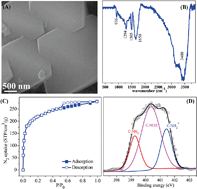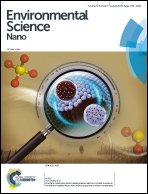Retracted Article: Plasma-grafted amidoxime/metal–organic framework composites for the selective sequestration of U(vi)†
Abstract
The selective sequestration mechanism of U(VI) by metal–organic framework supported amidoxime (AO/MOF) composites has been demonstrated by batch, XPS and EXAFS analyses. The results of this characterization showed that the as-prepared AO/MOF composites displayed an abundance of nitrogen- and oxygen-bearing functional groups. The batch experiments showed that the maximum U(VI) adsorption capacity of the AO/MOF composites at pH 7.0 (454.55 mg g−1 by fitting isotherm data with the Langmuir model) was remarkably higher than that of other heavy metals (e.g., 54, 62, 25 and 68 mg g−1 for Ca(II), Mg(II), Sr(II) and Na(I), respectively). In addition, the AO/MOF composites could extract 2.74 mg g−1 U(VI) from Huanghai seawater within 90 min, revealing that the AO/MOF composites presented highly selective adsorption and a rapid enrichment rate for U(VI) from seawater. XPS analysis indicated that the highly effective adsorption of AO/MOF composites was attributed to the surface functional groups. According to the fitting of the EXAFS data, the occurrence of a U–C shell for the U-loaded AO/MOF at pH 3.0 revealed inner-sphere surface complexation at low pH. These findings elucidated that AO/MOF composites can be regarded an excellent adsorbents for highly effective removal of U(VI) from aqueous solution and selective sequestration of U(VI) from seawater, which are crucial for realizing the development of sustainable nuclear energy.



 Please wait while we load your content...
Please wait while we load your content...